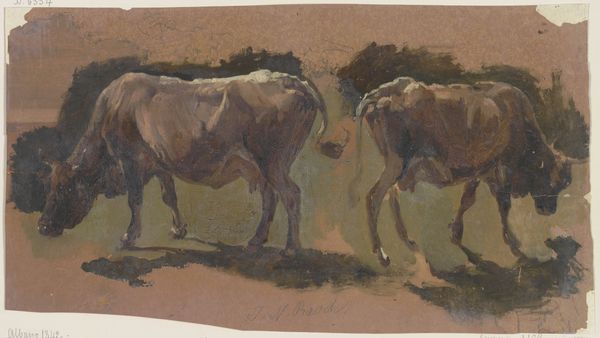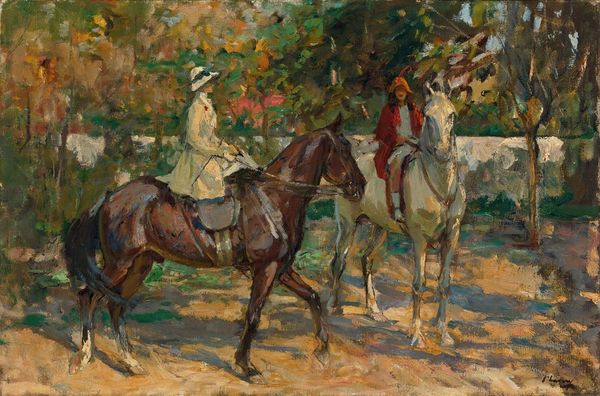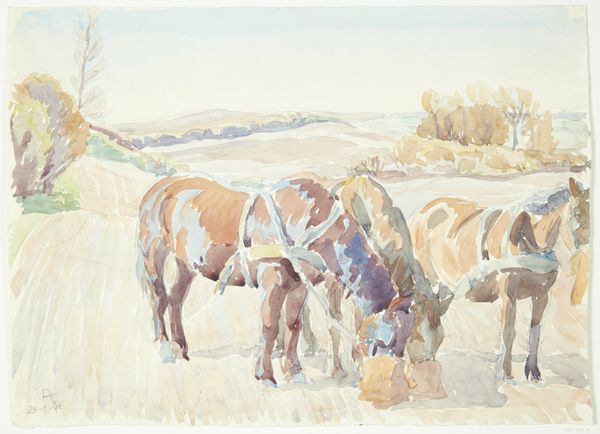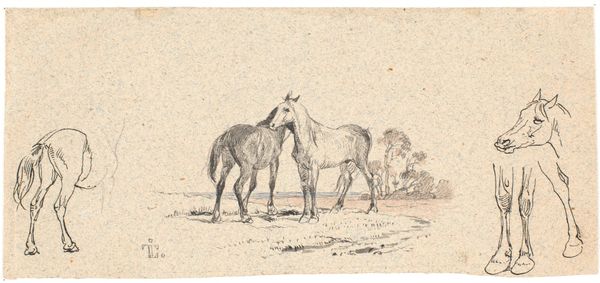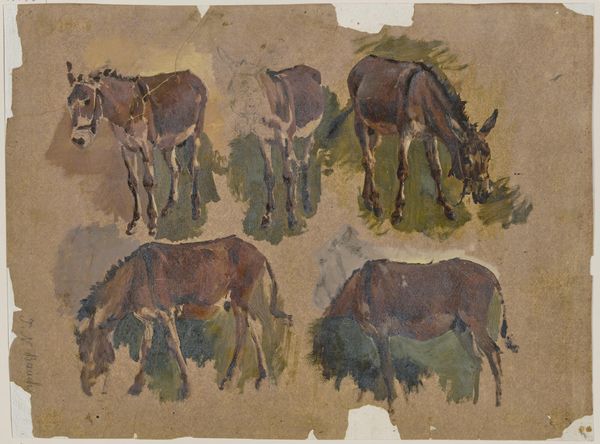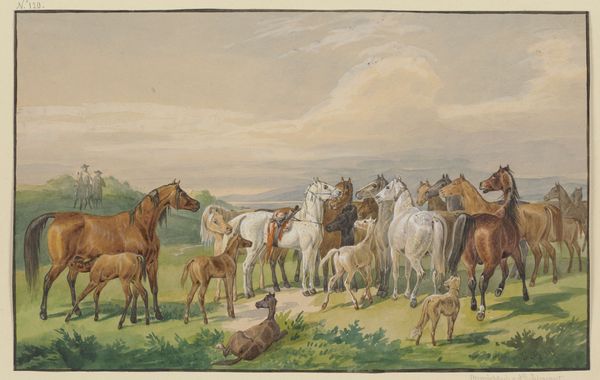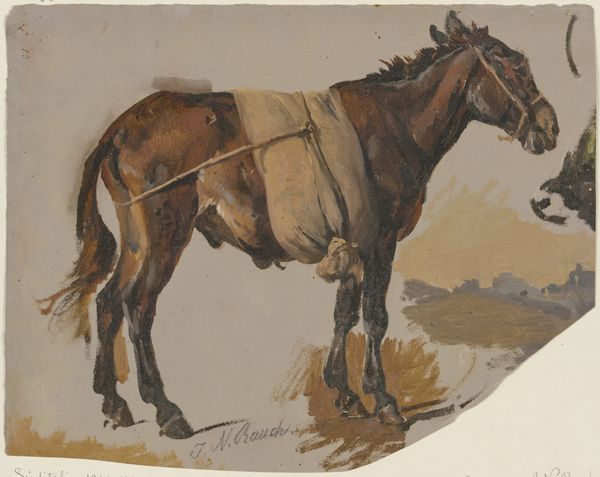
Copyright: Public Domain: Artvee
Curator: Today, we’re looking at John Singer Sargent’s watercolor painting, "Mules," created in 1918. Editor: It has such a placid quality, almost like a faded dream. The light seems to absorb detail, rendering the mules into soft shapes in a gentle landscape. Curator: Indeed. The composition demonstrates Sargent’s masterful understanding of watercolor techniques. Notice the broad washes of color, how he layers the pigments to define form and create depth, particularly in the bodies of the animals. He exploits the transparency of the medium to build up shadows and highlights with extraordinary economy. Editor: The mule has always been a creature burdened with cultural baggage. They are, after all, the stoic beast of burden. And considering it was painted in 1918, towards the end of World War One, these animals likely symbolized resilience and enduring hardship to contemporary viewers. Were they military animals or farm animals perhaps? Curator: Certainly a valid reading, given the period context. But from a formalist perspective, I am drawn to how Sargent organizes the pictorial space. See the placement of the mules within the landscape, not quite integrated yet harmoniously arranged to guide the eye across the composition. It’s the delicate balance between foreground and background that captivates me. Editor: To me, these figures, standing idly as though patiently awaiting a command, could represent an interlude. The somewhat hazy rendering of light through the watercolors contributes to a symbolic pause during such a destructive moment in history. The soft washes evoke a gentle dream. Curator: Perhaps we can consider how both elements coexist— the formal and the contextual. Sargent uses light and color to portray an idyllic space that holds a mirror up to that historic moment. Editor: Ultimately, viewing this work helps us appreciate how the image carries both individual interpretation and deep historical and cultural echoes. Curator: A fine observation. We can agree then that the value resides both in what meets the eye and in what vibrates within the depths of cultural memory.
Comments
No comments
Be the first to comment and join the conversation on the ultimate creative platform.
